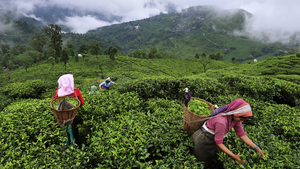Can do! The new era of functional energy drinks – digital magazine
Beverages that promise an energy boost are evolving, both in how consumers perceive them and how formulators are approaching the ingredients within. Traditionally, the category has been crowded with options offering high amounts of sugar, caffeine and artificial ingredients. But, the previously sports-focused sector is moving toward more natural and functional ingredients, with less sugar and artificial sweeteners, and a broader appeal that corrals women, the sober-curious and drinkers in search of mental acuity and overall wellness.
April 30, 2024

The shift is on in the energy drink zone. Convenience store display cases and grocery store aisles are jam-packed with consumer choices, and increasingly those choices include healthier and more natural ingredients. Less is more when talking about sugar and artificial ingredients, and the most innovative options are being positioned as functional beverages, offering benefits beyond a caffeine boost. Some examples include improved cognitive function, hydration and even mood enhancement.
New trends are emerging specific to colors and flavors. Travel-inspired flavors like yuzu and lychee are budding. Nostalgic confectionery flavors like cotton candy and cream soda are appealing to younger demographics. Health-connoting flavors like ginger and matcha are gaining traction, and neon colors and artificial tastes are being replaced by softer pastels and fruity flavors.
Get dialed in to the rainbow of changes happening in the energy drink sector by downloading this free digital magazine. The articles include:
Viewpoint: Goodbye sugar rush, hello afternoon boost
Formulators of today’s punchiest beverages are ditching jittery ingredients and artificial colors and flavors, opting instead for lower caffeine and natural, functional ingredients that prioritize health and wellness. Those new attributes are certainly broadening the appeal. Content Director Audarshia Townsend calls attention to Aspire, a beverage that offers a moderate amount of caffeine from green tea, no added sugar and zero calories, and is positioned as a lifestyle beverage as opposed to a typical pre-workout option.
Buzzy beverages evolved: Forget super sugary, welcome the functional future
Better-for-you ingredients, natural sweeteners and palatable flavors are the hallmarks of a new generation of energy drinks, as inventive new offerings blur the lines of a category once dominated by catering to serious athletes. Cindy Hazen leans on experts from Tate & Lyle, Prinova, G.O.A.T. Fuel from Jerry Rice, and Sensient Flavors & Extracts to explore all the latest trends.
Flavors and colors enhance the energy beverage experience
Consumers are looking for healthier options with natural ingredients, and they want the taste and color of the products they choose to reflect that. This means less artificial ingredients, more botanical extracts and fruit flavors, and a more sophisticated drink experience — even when it comes to energy. Kimberly J. Decker reveals the current inclination by consumers to see energy as a holistic goal, not just in terms of physical energy to enhance exercise, but as mental energy, too.
Drinks with jolt explore eco-friendly packaging options
Aluminum cans still dominate the sector, despite sustainability concerns, but a few packaging options have the potential to be real disruptors. Cardboard cans with a small environmental footprint, reusable aluminum bottles, and convenient stick packs lead that list of innovative options. But as Nick Collias notes, aluminum packaging still dominates the $80+ billion energy drink market, and according to SPINS, that probably won’t change any time soon.
Energy drinks charge ahead with new consumers, better ingredients
Functional benefits, a focus on Gen Z, and appealing to a broader audience including women and the sober-curious are some of the leading trends impacting the category. Take some advice from experts with Celsius, Emotional Utility Beverage, and Riot Energy about how to best capitalize on the movement. Some of the strategies discussed in this Q&A coordinated by Melissa Kvidahl Reilly include connecting with Gen Z consumers and encouraging user-generated content, integrating functional ingredients like lion’s mane [Hericium erinaceus] mushroom and GABA [gamma-aminobutyric acid], and being brand-visible at major music events like the Breakaway Music Festival.
Examples of energy drink takeaways for your business include:
Consumption habits regarding sweetness are changing, and product manufacturers are adjusting with stevia and other plant-based sweeteners to reduce sugar content.
Caffeine and guarana reign as the top sources of caffeine-containing energizers, with green tea following. Among non-caffeine energizers, B vitamins lead the pack, trailed by ginseng.
As many as 83% of women ages 18 to 34 consumed an energy drink in the past three months, as calculated by Mintel.
Underwritten by:

Read more about:
Digital magazinesYou May Also Like




